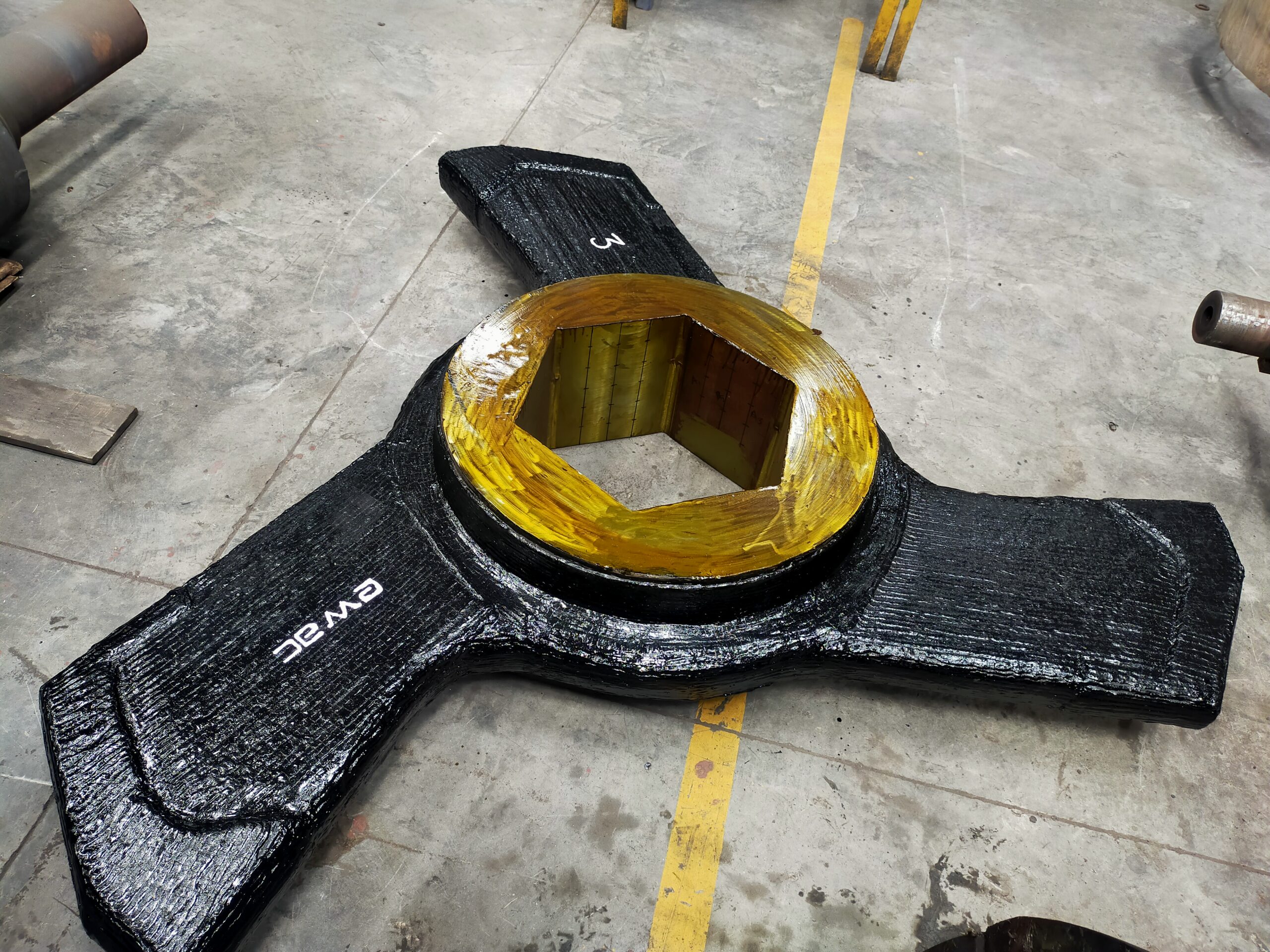
Steel Industry plays a predominant role in providing the desired momentum to a nation’s economy. Over the years, the radical developments in different industrial and economic policies added relevance to the sector.
The major thrust areas that need the focus are as follows :

To achieve the above aspects, we have constantly endeavoured to supplement the various efforts being taken by the Steel industry.
The scientific approach to wear analysis and the versatile range of products and processes developed by EWAC R&D, together with the technical expertise of engineers, eventually aid the Steel Industry in achieving its maintenance goals seamlessly.
In an integrated steel plant, the Sinter Plant produces agglomerated mass known as Sinter from iron ore, coke, and flux fines.
After the sintering process, the Single Roll Crusher or the Sinter Breaker is the equipment that crushes large blocks of red hot sinter cakes at 650-900°C, falling from the Pellet Car. The Sinter Breakers consist of 9 to 18 sprockets having 3 or 4 integral radial arms mounted and assembled on a shaft to form a roll crusher. The crusher arms pass between the series of similar numbers of grizzly/grate/knife bars while breaking the sinter cake into smaller sized sinter lumps.
The arms of the Sinter Breaker and the top surface of the Grizzly Bars are subjected to severe impact and abrasion at very high temperatures. So, these two components are subjected to the most rapid wear. Enhancement of their wear life is a task of continuous development for tribologists. Our plethora of customised products and turnkey reclamation technology has successfully established one of the best performances of Sinter Breakers and Grizzly Bars in many integrated steel plants of various capacities. Today, we are a leading supplier of new sets of Sinter Breakers and Grizzly Bars, complete with value-added life-enhancing wear-resistant cladding.

In an integrated steel plant big boulders of various minerals like coal, limestone and dolomite are crushed into smaller lumps of uniform size for use, with various types of hammers.
So, we see various hammer mills using hammers of different base materials, shapes and sizes engaged in crushing the above raw materials.
The hammers are subjected to severe impact and abrasion which are replaced at frequent intervals as consumables. EWAC Alloys with its six decades of experience in reclamation technology has developed high performance ready to use crusher hammers for coal and flux. We are a leading supplier of these hammers, are established in many integrated steel plants for their life-prolonging factor, high crushing efficiency, reduced downtime and overall techno economics.
Steel Mill rolls support solidified billets, slabs with a surface temperature above 500°C to avoid the bulging of the slab/billet due to the Ferro-static pressure of solid metal. The cooling water that flows continuously generates surface stresses and initiate thermal cracking. In addition, slab/billet skin is covered by mould’s flux which reacts with water and generates a highly acidic and corrosive environment and ultimately deteriorates the surface of the roll.
IMPORTANCE – Vital
LEAD TIME – 90 Days
The application of rolls is in CCM which is directly related to production. Failures & frequent wear leads to loss of productivity and losses.
Doubling the life of rolls at an additional cost of 25% of forged rolls value leads to a big time-saving. Further, after wearing of cladded surface, the rolls barrel can be re-cladded thus salvaging out the life from erstwhile to be scrapped rolls.
